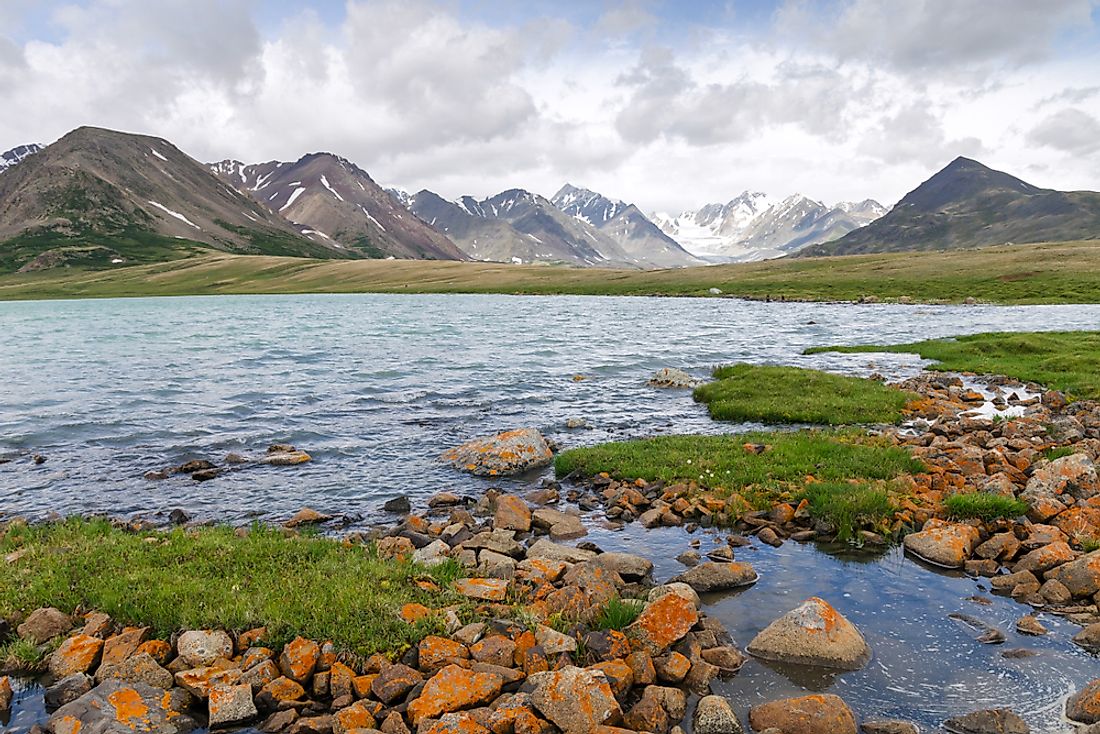10 Interesting Facts About Mongolia

Mongolia, a landlocked country in East Asia, is sandwiched between China to the south and Russia to the north. It is the world's most sparsely populated sovereign country. Fertile land is nearly absent in Mongolia but there are vast stretches of grassy steppe, mountains, and deserts. The country also experiences harsh weather conditions. The Mongolians have, however, managed to adapt themselves to life in the raw nature of Mongolia. Visitor numbers to Mongolia from foreign countries are low but those that do visit come back with a lot of exciting memories. Mongolian landscapes, culture, and way of life fascinate them. Here are some of the most interesting facts associated with Mongolia.
10. Mongolia Has The World's Coldest Capital City
Ulaanbaatar is the capital of Mongolia. It is located in the country's north-central part at 1,300 m above sea level in a valley formed by the Tuul River. Nearly half of Mongolia's population live in and around this city. It is also the world's coldest capital. The annual average temperature of Ulaanbaatar is around -1.3°C. The summers here are short and warm while winters are extremely dry and bitterly cold. January temperatures can drop to as low as −36 to −40 °C.
9. The Powerful Mongol Empire Founded By The Ruthless Genghis Khan Originated In Mongolia
Genghis Khan founded the Mongol Empire in the 13th century. It became the world's largest contiguous empire after his death. He united the various nomadic tribes in Northeast Asia under one empire and then invaded and conquered neighboring lands. Soon, nearly most of Eurasia came under the control of the Mongol Empire. These war campaigns led by Genghis Khan were also known for their brutal nature. Massacres of hundreds to thousands of innocent civilians followed wherever the Mongol army made an entry. Thus, Genghis Khan is often remembered as one of the world's most brutal and genocidal rulers.
8. Nomads Still Live In Mongolia
Outside the city of Ulaanbaatar in Mongolia, there are miles and miles of open grasslands or Mongolian steppes. While nearly half of the population of Mongolia live in the capital city and some scattered villages around it, the remaining population lead a nomadic way of life not much different from their ancestor's hundreds of years ago. The nomads of Mongolia live in tents called yurts with their families and livestock. They move to find new pastures for their livestock or to protect themselves from extreme weather conditions.
7. Mongolia Is Noted For Its Horse Culture
Horses play a major role in the daily lives of Mongols. Horses symbolize the culture of the country and it is said that a Mongol without a horse is like a wingless bird. The equine population of Mongolia outnumbers its human population. Over 2 million horses are found here. The horses are let loose and live outdoors where they find their food. Some animals are killed for meat. The most important use of horses is, however, for traveling from place to place. Horse racing is also a popular sport in Mongolia.
6. Mongolia Has Asia's Second Largest Desert
The Gobi Desert spans across southern Mongolia to parts of Northern and Northeastern China. During the peak of the Mongol Empire, the several important Silk Road cities were located along the Gobi. The low precipitation in this desert is the result of a rain shadow effect whereby the Tibetan Plateau block the rain-bearing winds from the Indian Ocean from entering the Gobi. The desert stretches for around 1,295,000 square km. Most of the Gobi is sandy but some areas have exposed bare rock.
5. Dinosaurs Roamed In Mongolia Millions Of Years Ago
The Gobi Desert in Mongolia is regarded as the world's biggest dinosaur fossil reservoir. The region is noted for a large number of dinosaur fossils from the Late Cretaceous period representing the final phase of dinosaur evolution. Studies have revealed that the environment of the Gobi Desert was vastly different from what it is today when the dinosaurs lived. Over 80 genera of dinosaurs have been discovered in the Gobi and more than 60 fossil sites of dinosaurs and other vertebrates have been found here.
4. Mongolia Is Called "the Land of the Blue Sky"
The sky in Mongolia remains cloudless for over two-thirds of the year. Thus, the blue sky is visible throughout the vast stretch of the country on most days. Hence, Mongolia is often referred to as "the Land Of The Blue Sky."
3. The Two-humped Camel Lives In Mongolia
The Bactrian camel, an even-toed ungulate, is found in some parts of Central and East Asia with the largest population of this species found in Mongolia. This camel is noted for the two humps on its back. It has a high tolerance for high altitudes, cold, and drought, and so was used for travels on the Silk Road.
2. Fermented Horse Milk Is A Popular Mongolian Beverage
The Mongols love to drink Airag which is a fermented dairy product made from a mare's milk. Airag is the traditional national drink of Mongolia. The nomadic people of the country often greet their guests with a bowl of Airag. One must take a sip of the drink as rejecting it right away would be considered as impolite.
1. Mongolia Is Noted For The Naadam Festival
Mongolia hosts an annual sporting event called the Naadam Festival. It is locally known as "the three games of men". These are archery, horse racing, and Mongolian wrestling. Although traditionally only men participated in these games, today women also take part in horse-racing and archery. The Naadam Festival is held across the country in midsummer.











